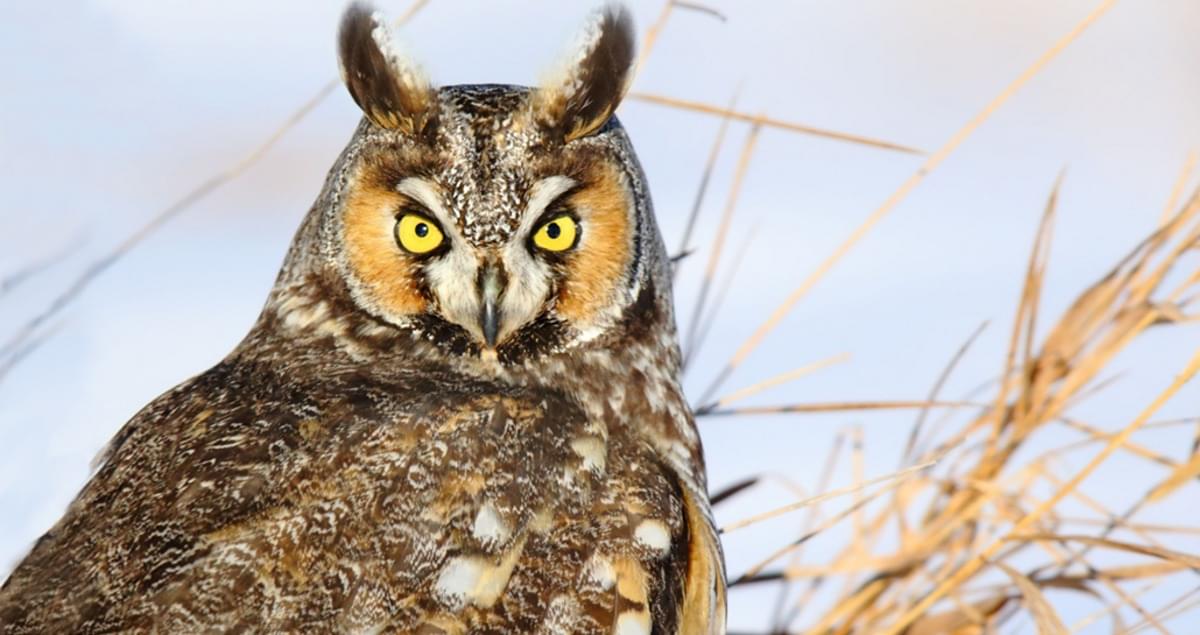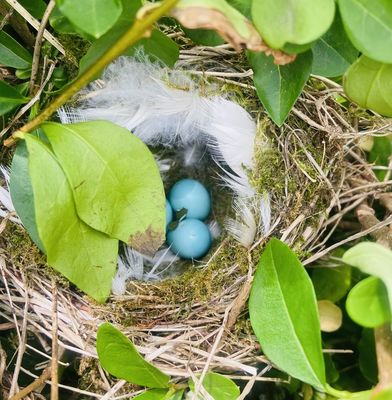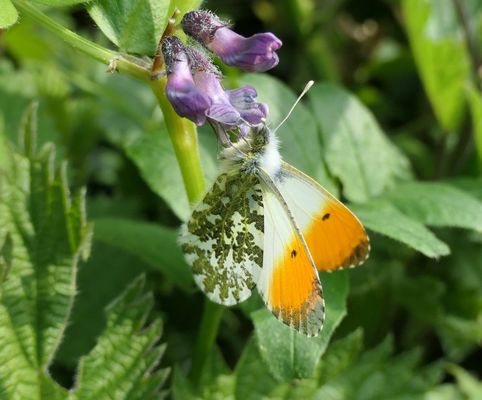
TOP OF THE TREE: The elusive long-eared owl is making a comeback
IT felt magical, even otherworldly, when Dúlra stood on the forest floor as the last light drained from the sky.
His eyes strained to see through the darkening tangle of leaves and branches to the source of the most unusual bird call he had ever heard.
The sounds were all around him – three, no, four birds calling in stereo.
He may have been in Lady Dixon Park on the edge of West Belfast, but it was like he’d stepped through a portal to a world similar to but strangely different to our own.
The spooky calls echoed through the trees as the forest shed its sunlit utopia for a nocturnal coat that’s still alien to us even after millions of years of evolution. During the day we can skip through the flowers and leaves without a care in the world; at night it’s like a horror movie where hell opens and all sorts of scary creatures come out to play.
Dúlra doesn’t care how brave you think you are – a night in a forest with no light will have you crying for your mother!
He had gone to the park with birder Geordie Hynes who told him to keep an ear out for the sound of creaking gate – but when Dúlra heard it, he could hardly believe it was coming from a bird at all.
This was the famous call of the long-eared owl.
Geordie had found its nest the previous week at the top of a giant redwood – some of the trees here are hundreds of years old.
For Dúlra, Geordie is Ireland’s pre-eminent bird authority, especially when it comes to nests and breeding. When you’re walking with him, it’s like he conjures nests out of thin air.
He’ll notice among a tangle of brambles that a branch is slightly bent to an unnatural angle, or a single nettle out of sync with its neighbours. And suddenly, he’s bent down to reveal a wren’s nest in the undergrowth or a goldfinch’s on a branch.
When Geordie saw a splash of droppings at the base of the giant tree, he knew a bird of prey was nesting above. He pointed out to Dúlra that birds of prey don’t use a fecal sac – where chicks handily poop into a tiny sack which the parents carry from the nest and drop far away.
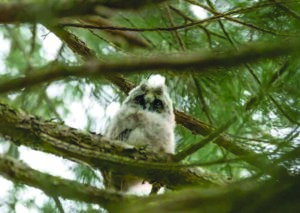
YOU LOOKIN' AT ME: The long-eared owl chick.
But birds of prey, at the top of the food chain, have no need to be so careful. So they just let it all drop straight out on to the ground below.
It took a long wait until dusk until the sound of the creaking gate revealed what they were.
We returned this week, more in hope than expectation. You might see a nest in a tree-top, but will you see the birds? And with owls, it’s always a race against time as light ebbs.
But as we approached the tree a bird was calling. Astonishingly, one of the chicks had left the nest and was perched high up in the next tree. We could actually see it! We focused our bins – this was a truly rare nature experience. “Not many people get to see this,” whispered Geordie.
Even he was excited. The baby owl – already the size of the adults but covered in a downy plumage – actually twisted its head a right angle and looked down at the two strange visitors. And you could immediately see why it’s called ceann cait – cat’s head – in Irish.
Then a burst of powerful wings cut through the trees – it was the one of the parents answering their baby’s hungry calls. The exchange – maybe a mouse – was too fast to spot and in an instant the adult was gone like a winged shadow.
Love listening to young Long Eared Owls @UlsterWildlife @LongearedOwlne1 pic.twitter.com/9NyxTF3mJW
— 🤘Pete C 👌 (@WildPeteC) June 9, 2020
The light was fading fast – but the owls’ other chicks were also starting to wake up for the night – calling for food. We couldn’t spot the others, but we stayed transfixed in the undergrowth, listening to their hungry calls all around us until we could barely see our hands in front of our face.
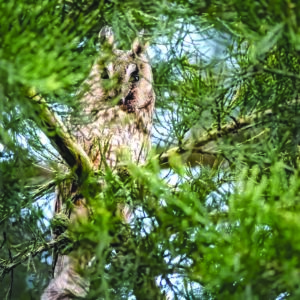
MAMA BIRD: The protective long-eared owl stares down strangers posing a potential threat to her chick.
Geordie pointed out that, unusually, long-eared owls start incubating their eggs as soon as the first one is laid – most birds lay one a day and only incubate them when all are laid, so they hatch together. These owl chicks will be days younger or older than their siblings, which makes a big difference in development.
It was near midnight when Dúlra left Lady Dixon Park that night – and although you couldn’t see any other living thing, you could sense they were all around, scurrying on the forest floor. The owl chicks wouldn’t go hungry here.
Dúlra’s phone pictures of the baby owl in the treetops wasn’t worth reproducing, but Geordie returned the next night with west Belfast nature photographer Stephen McVeigh, who captured not only the chick with its Mohican haircut, but also the adult in what are amazing images of an experience Dúlra will never forget.
* If you’ve seen or photographed anything interesting, you can text Dúlra on 07801 414804.
